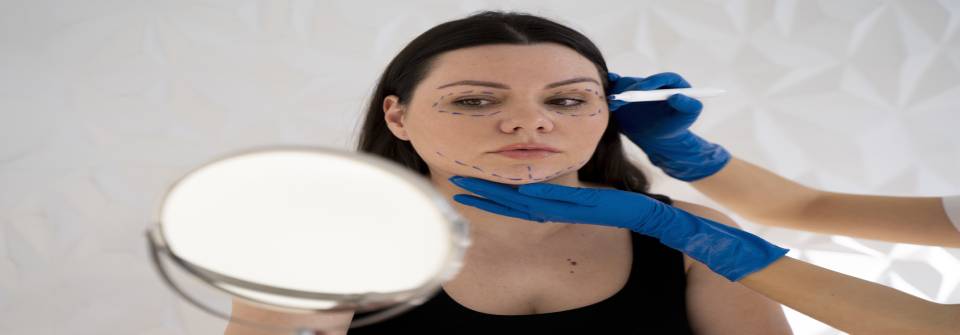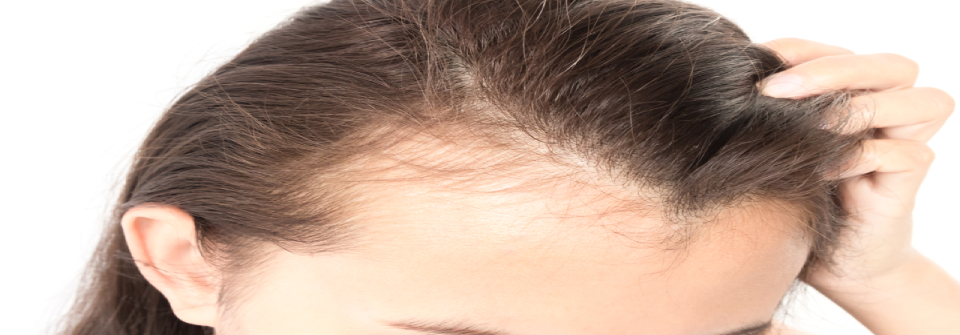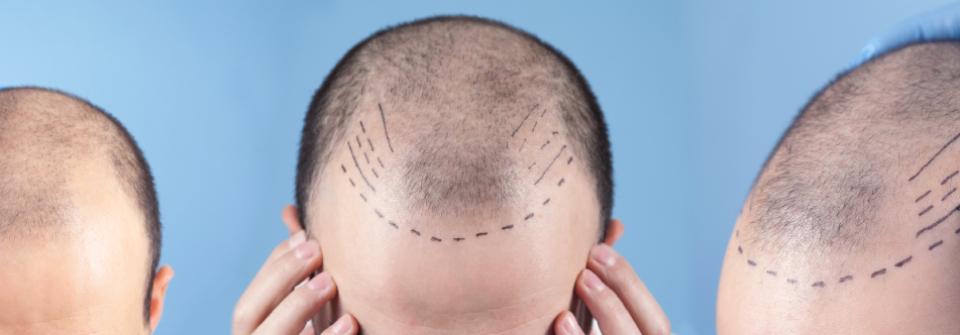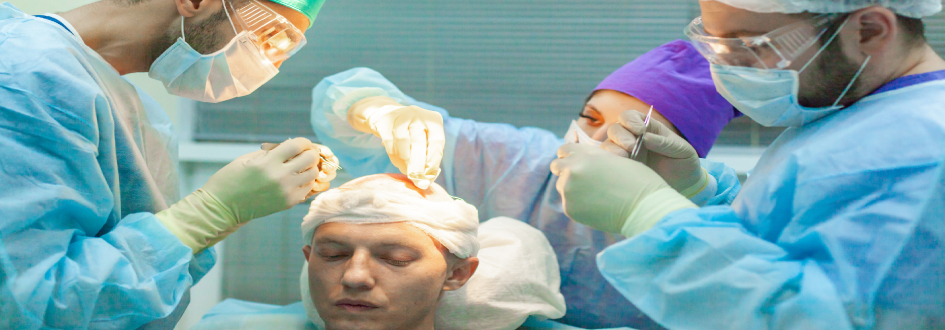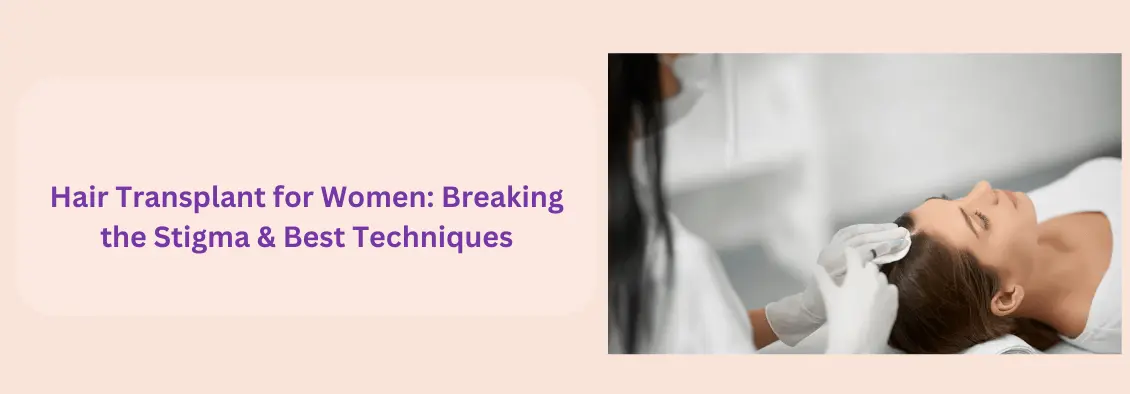
Hair Transplant for Women: Breaking the Stigma & Best Techniques
Hair loss is often seen as a problem that primarily affects men, but millions of women around the world struggle with thinning hair and bald patches. Hair loss in women can be emotionally devastating, affecting self-esteem and confidence. The stigma surrounding hair restoration treatments for women has been a significant barrier for many considering solutions like hair transplants. However, with increasing awareness and advancements in the field of hair restoration, women are now embracing these treatments as a valid and empowering option. This blog explores the best techniques for hair transplants for women, and how we can break the stigma to make this solution more widely accepted.
Understanding Hair Loss in Women
Hair loss in women can occur for a variety of reasons, including genetics, hormonal changes, age, stress, diet, and certain medical conditions like thyroid issues or alopecia. Unlike men, who often experience male pattern baldness in predictable areas, women’s hair thinning tends to be more diffuse. This can make it harder to pinpoint and harder to treat, but no less frustrating.
The emotional impact of hair loss can be profound, affecting self-confidence, body image, and even social interactions. Many women feel societal pressure to maintain a thick, luscious mane, contributing to feelings of embarrassment or shame when they notice their hair thinning. This is where breaking the stigma comes in raising awareness about hair restoration options, such as hair transplants, can help women take control of their hair loss journey.
Breaking the Stigma: Changing Perspectives
Hair transplants were once seen as a "man's solution," with women facing judgment for considering the procedure. However, perceptions are shifting as more women share success stories. With advancements in technology, transplants are now safer, more effective, and less invasive, offering natural-looking results. Clinics are also focusing on providing a supportive, comfortable experience for women, helping to eliminate the stigma.
The Importance of Seeking Professional Help
For women considering a hair transplant, it's essential to consult with an experienced professional who specializes in hair restoration. A consultation with a skilled surgeon will provide insight into the causes of hair loss, potential treatment options, and whether a transplant is the right solution. The success of a hair transplant largely depends on the skill and experience of the surgeon, making the choice of clinic paramount.
When selecting a clinic, women should look for a practice that has experience working with female patients. A well-established clinic with positive reviews and testimonials can give you peace of mind that you’re in good hands. A personalized consultation where the surgeon listens to your concerns and goals will ensure that you receive the best possible outcome.
Best Techniques for Hair Transplants in Women
Several hair transplant techniques have proven to be effective for women. Below are some of the most commonly used methods:
1. Semi-Robotic Hair Transplant
Semi-robotic hair transplant utilizes robotic assistance for precision in graft extraction and implantation while retaining human expertise for artistic hairline design. This method improves accuracy, reduces human error, and enhances efficiency, leading to natural results with minimal downtime. Combining both techniques ensures optimal hair restoration with superior outcomes.
2. Follicular Unit Transplantation (FUT)
FUT, also known as the "strip method," involves removing a strip of skin from the donor area and dissecting it into individual follicles for transplant. While this technique leaves a linear scar, it allows for the harvesting of a larger number of follicles in a single session, which can be ideal for women with significant hair loss.
Bio-FUE (Biologically Enhanced Follicular Unit Extraction)
It is an advanced hair transplant technique that combines FUE with regenerative therapy. It involves extracting hair follicles individually and enhancing them with growth factors, PRP (Platelet-Rich Plasma) or stem cells to improve survival rates, faster healing, and better hair growth.
4. Follicular Unit Extraction (FUE)
FUE is one of the most popular techniques for hair transplants due to its minimally invasive nature. The procedure involves extracting individual hair follicles from the donor area (usually the back or sides of the head) and transplanting them into thinning or bald areas. This method leaves tiny, barely noticeable scars and allows for a quicker recovery compared to older techniques. FUE is often preferred by women due to its natural-looking results and minimal downtime.
5. Platelet-Rich Plasma (PRP) Therapy
PRP therapy is a non-surgical treatment often used in conjunction with hair transplants. It involves extracting the patient’s blood, processing it to concentrate platelets, and then injecting it into the scalp. The growth factors in the PRP help stimulate hair follicles, improving hair thickness and density. PRP can be particularly beneficial for women experiencing early stages of hair thinning.
6. Stem Cell Therapy
Stem cell therapy is an innovative and emerging treatment for hair restoration. This technique uses stem cells to regenerate and stimulate dormant hair follicles, promoting natural hair growth. While it’s still in the experimental phase, it holds great potential for future hair restoration treatments.
7. Scalp Micropigmentation (SMP)
SMP is a non-invasive treatment that creates the illusion of thicker hair by applying tiny pigment deposits to the scalp. This technique works well for women who are looking to enhance the appearance of their hair density, especially if they have diffuse thinning..
Pre-Procedure Considerations
Before a hair transplant, women should have a consultation to assess candidacy, considering age, hair loss, health, and expectations. Patients must stop blood thinners, avoid smoking, and follow pre-op instructions. The procedure typically takes 4-8 hours with local anesthesia to minimize discomfort.
Post-procedure recovery and Aftercare
After the transplant, patients may experience swelling, tenderness, and redness, which resolve in a few days. Following aftercare instructions, like avoiding sunlight and strenuous exercise, is essential for healing. Hair growth can take several months, with full results visible in 12-18 months. Patience is key during recovery.
Results & Long-Term Maintenance
The results of a hair transplant are permanent, as the transplanted hair follicles are resistant to the hormones that cause hair loss. However, some women may require touch-up procedures to maintain optimal density as they age. Additionally, maintaining a healthy lifestyle and following up with your surgeon for regular check-ups can help ensure the longevity of the results.
Conclusion: Empowering Women with Confidence Through Hair Transplants
Hair transplants for women are no longer a taboo topic. With advancements in techniques and growing societal acceptance, women are now embracing this transformative procedure as a means to regain their confidence and self-esteem. Breaking the stigma surrounding hair restoration is a key step in helping women feel empowered in their skin.
If you’re considering a hair transplant, it’s essential to work with a clinic that understands your unique needs and provides personalized care. At Livglam Aesthetic Clinic, we pride ourselves on offering state-of-the-art hair restoration treatments, performed by expert surgeons with a focus on natural, long-lasting results.
